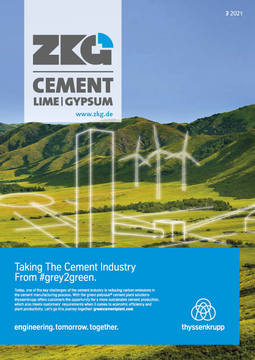Illustrated History of Cement and Concrete
Cement and concrete expert Rainer Nobis has written a richly illustrated, entertaining non-fiction book: “Illustrated History of Cement and Concrete – The Exciting Development of Two Outstanding Building Materials”.
For the first time the new book sheds light on the entire development of the number one building materials, cement and concrete. The book has a popular-scientific claim that explains all facets of cement and concrete. It is not a pure history or technical book but is aimed at all those who want to learn about a subject in an enjoyable way. Whether by delving into the text or by looking at more than 700 illustrations with detailed descriptions. The reading is entertaining and instructive. It is available in both German and English language.
Thus, the author reports on the use of gypsum and lime already in our early history, on the earliest uses of mortars and concretes long before the Romans, and on the development of Portland cement as we know it today. It also describes the first use of mass concrete and the development of reinforced and prestressed concrete structures, its use in shipbuilding and as an strategic role in wars. However, the book not only covers the technical production and use of cement and concrete during historical times, but also includes the facets of economic and social history.
The development of cement since the beginning of the 19th century plays a special role in the book. It describes the discovery that not the hardest, whitest limestone makes the best cement and mortar, but rather a brown limestone that contains a certain amount of clay. This practical story begins mainly in
also describes the first use of mass concrete and the development of reinforced and prestressed concrete structures, its use in shipbuilding and as an strategic role in wars. However, the book not only covers the technical production and use of cement and concrete during historical times, but also includes the facets of economic and social history.
The development of cement since the beginning of the 19th century plays a special role in the book. It describes the discovery that not the hardest, whitest limestone makes the best cement and mortar, but rather a brown limestone that contains a certain amount of clay. This practical story begins mainly in England, where experiments were carried out without scientific knowledge and good results quickly turned into a flourishing business. But people on the European mainland were not idle either. Outstanding researchers and building experts, e.g., Louis-Joseph Vicat in France or Prof. Johann F. John in Germany, pushed research forward.
However, the book is not limited to technical aspects, but also describes extensively the economic and socio-economic development of the cement industry around the world. The development in Europe, China and the United States of America plays a special role.
The book also describes the possibilities of reducing the ecological footprint of cement and concrete production, on the one hand to reduce carbon dioxide emissions during clinker production, but also to improve the image of cement and concrete in the long term. After all, without cement and concrete, the ongoing urbanisation worldwide would be inconceivable. It is foreseeable that the urbanisation of life will continue to drive up demand for the building materials in the future. Our modern infrastructure, roads, subways, harbours or high-rise buildings are not feasible without concrete. Concrete intensity will continue to increase.
The book is not only aimed at all those who are professionally involved with the building materials cement and concrete, but also at the interested layperson.
There is an English and a German version, which can both be ordered at the Bauverlag’s Book Shop “Profil-Buchhandlung im Bauverlag”:




